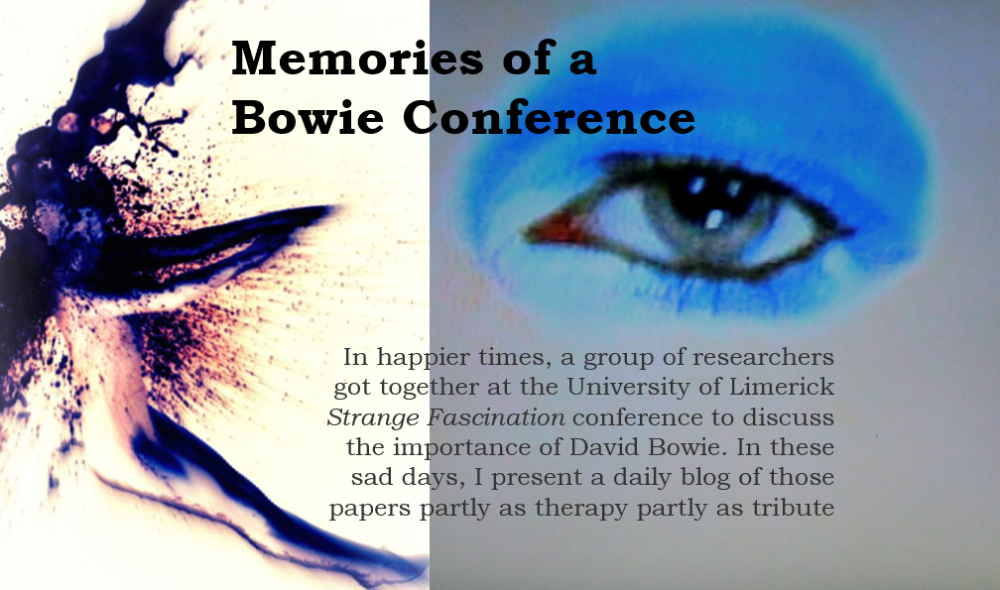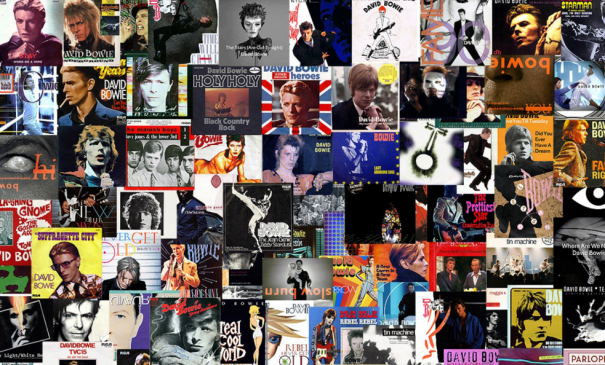
Ian Chapman From David Bowie to Diamond Dogs: the obfuscation of self and the triumph of alienation, as traced through an iconographical analysis of the artist’s first eight album covers
SPEAKER Chapman lectures in Popular Music at Otago University, New Zealand. His PhD thesis is a visual analysis of the album covers of David Bowie.
David Bowie, Changes demo 1971
SYNOPSIS Album cover art is an under-utilised resource to visual analysts. This paper evaluates Bowie’s journey through such an analysis, primarily using techniques drawn from art history. This shows how the artist began to eschew personal authorship in favour of archetype, promoting artifice by drawing on loaded historical symbolism, and conveying ‘otherness’. Ultimately he provided a spectacular rallying cry to the alienated.
 KEY POINTS Bowie’s debut album cover displayed a fresh-faced young mod. Eight years later this honesty had been obliterated, replaced on Diamond Dogs by a disturbing anthropomorphic freak-show exhibit. A series of performative incarnations had traded self for archetype. Space Oddity conveyed alienation through technological advancement, represented via op art illusion. Hunky Dory eschews realism for a borrowed, filmic pose.
KEY POINTS Bowie’s debut album cover displayed a fresh-faced young mod. Eight years later this honesty had been obliterated, replaced on Diamond Dogs by a disturbing anthropomorphic freak-show exhibit. A series of performative incarnations had traded self for archetype. Space Oddity conveyed alienation through technological advancement, represented via op art illusion. Hunky Dory eschews realism for a borrowed, filmic pose.  On Aladdin Sane, a lightning bolt figuratively splits his psyche in two. Pin Ups omits the word David in preference for Bowie, a depersonalizing tactic. By Diamond Dogs, Bowie’s ‘reality’ had been fully replaced by an anthropomorphic cartoon freak.
On Aladdin Sane, a lightning bolt figuratively splits his psyche in two. Pin Ups omits the word David in preference for Bowie, a depersonalizing tactic. By Diamond Dogs, Bowie’s ‘reality’ had been fully replaced by an anthropomorphic cartoon freak.
KEY QUOTE ‘The cover of Diamond Dogs is the ultimate in both obfuscation of self and the presentation of Bowie’s overarching theme of alienation’
Victoria Broackes, Co-Curator 'David Bowie is', on the Aladdin Sane album cover
 LINKS
'I cried on my daughter's shoulder when I heard David Bowie was dead'
Australia mourns Bowie
LINKS
'I cried on my daughter's shoulder when I heard David Bowie was dead'
Australia mourns Bowie